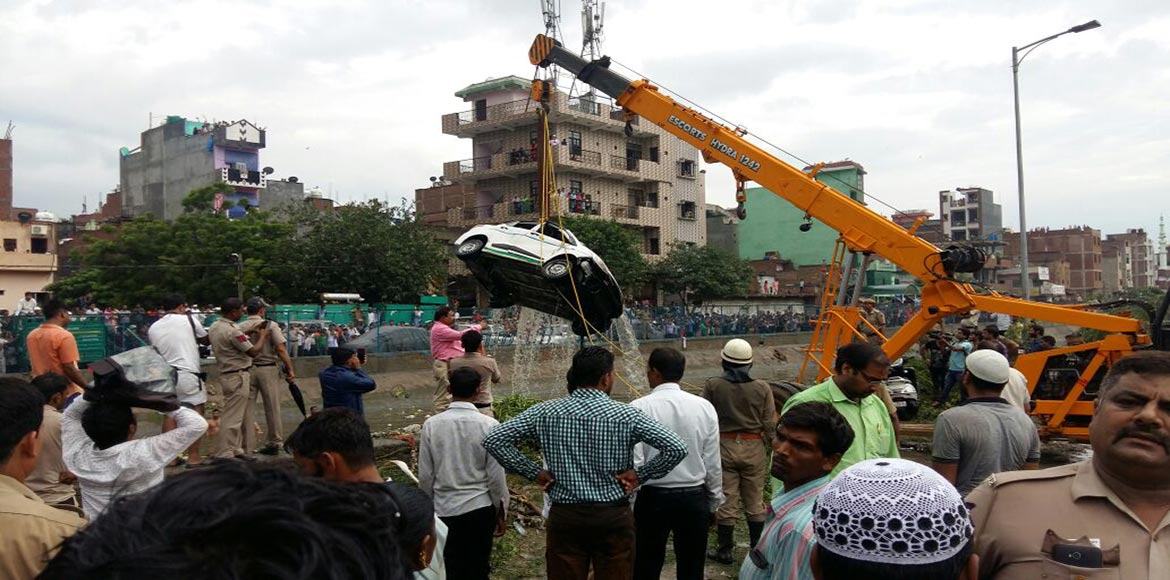The families of the two victims of the Ghazipur landfill collapse continue to stare at the towering dumpsite that sealed their fates without any hope or resolution. City Spidey speaks to them.

A sense of incomprehensible loss mounts on Mahipal Singh Gautam. In a voice that’s almost a whisper, he says, “What wrong did my son do that his life was cut short so cruelly?"
Abhisek Gautam, his son, was one of the two victims of the Ghazipur landfill tragedy, when part of the mountain of garbage collapsed on passers-by on September 1.
Abhisek and his friends had gone to buy fruits from the Ghazipur fruit market. "They were coming back when the landfill collapsed," his father says.
Gautam is still dealing with the death — not quite sure how to. He continues staring at his feet. “I got Rs 3 lakh as compensation — Rs 2 lakh from the Delhi government and Rs 1 lakh from EDMC. Yes, I have the money, but my son will never come back.”
The Ghazipur landfill tragedy was waiting to happen — a dumpsite towering to a height of a 15-storey building. And despite the loss of two lives, the government is reluctant to mend its ways.
In the furore that ensued afterwards, tall promises were made — but the mountain still stands.
A day after the incident, Neema Bhagat, EDMC mayor, paid a visit to the grieving father and assured him that waste from the Ghazipur landfill would be removed as soon as possible.
“Today my son could have been with me, had the government taken the site’s growing height seriously. Even today I see tonnes of waste being dumped at the site. I don’t know what EDMC or the Delhi government will do in future, but I would have felt better if this landfill — a reminder of my son’s grim death — no longer stood here,” says Mahipal abjectly.

File pic of that fateful day
The force of the collapse that day had swept along with it several vehicles into the nullah running alongside.
One of the vehicles belonged to 24-year-old Rajkumari Chand, the other casualty of that fateful day.
The only child to her parents, Rajkumari had completed her graduation this year. Her mother had passed away a year back, and she was the sole caretaker of her ageing father.
Feeble with grief, her father says, “After I lost my wife, she was all I had. She was the one who would take care of me. That was our life — me and her. She was to get married in May next year.”
After what happened, East Delhi residents expected the government to spring into action and shift the site to some other location, or find some waste-management solution. But their hopes were unfounded.
Despite the Delhi High Court and the National Green Tribunal (NGT) coming down heavily on the government authorities, the response has been abysmally slow.
Soon after the incident, Delhi Lieutenant Governor Anil Baijal ordered a ban on dumping waste at the Ghazipur landfill. On November 16, when City Spidey contacted Baijal's office, a senior official offered noncommitally, “This matter comes under EDMC, and the municipal commissioner will tell you exactly what has been the development so far.”
And this is what EDMC commissioner Rajveer Singh had to say: “We have no alternative land to dump the daily waste. At this point, we are left with no option but to continue dumping waste at the Ghazipur landfill. We are depending on NHAI [National Highway Authority of India] to use the solid waste for construction purposes.”
In keeping with NGT’s directive, NHAI was to start removing the solid waste from the Ghazipur landfill for road construction. In fact, NHAI and EDMC had signed an agreement last year in November to that effect.
But a year has gone by, and red tape seems to have won over the tragedy. NHAI is yet to hire a private agency to segregate waste.
The whole thing, according to sources in NHAI, will take at least two more months to kick off — if at all.
“We will use municipal solid waste from the Ghazipur landfill for only a 2-km stretch as an experiment for the next two years, and then we will take a final call on the matter,” admitted a senior NHAI official.
And all the while, the towering mountain of solid waste will continue to stand, a toxic monument to the utter failure of the system, and its responsibilities towards the citizens it was created to look after.
Here's a question to those who hold the cards: Could we not have done better this time?